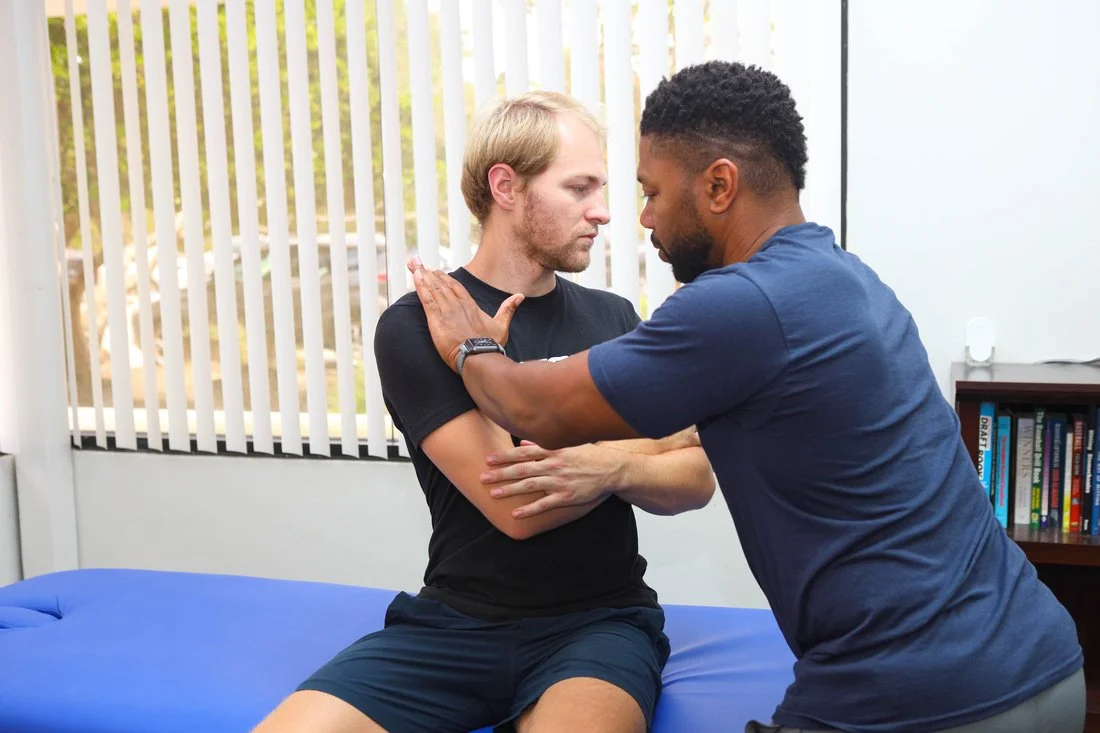Fixing Frozen Shoulder, Knee, Hip, and Shoulder Pain
Dealing with joint pain or a condition like frozen shoulder can be frustrating, especially when it limits your ability to do the things you enjoy. Whether it’s your knee, hip, or shoulder, chronic pain can feel like it’s holding you back.
But here’s the good news—effective therapies can help you find relief and restore mobility. Let’s explore the causes of these common issues and how treatments like Muscle Activation Techniques (MAT), kinesiology, and Neurosomatic Therapy (NST) can get you moving again.
What Is Frozen Shoulder, and Why Does It Happen?
Frozen shoulder, or adhesive capsulitis, is a condition where the shoulder joint becomes stiff and painful. Over time, it can severely limit your range of motion. It’s commonly caused by inflammation in the joint capsule, often linked to injury, overuse, or conditions like diabetes. Without treatment, frozen shoulder can progress in stages, from initial stiffness to severe immobility.
While the shoulder is one of the most common areas affected, similar stiffness and pain can occur in the knees or hips. These issues often stem from muscle imbalances or repetitive strain. The key to addressing these problems lies in understanding how your body moves and identifying areas of dysfunction.
The Role of MAT and Kinesiology in Pain Relief
Muscle Activation Techniques (MAT) and kinesiology are effective therapies that target the root causes of joint pain. Instead of focusing solely on the painful area, these approaches aim to improve muscle function and balance across the entire body.
How they help:
MAT works by identifying weak or inhibited muscles that may be contributing to joint stress. Through precise techniques, it reactivates these muscles, improving stability and reducing strain on the joint.
Kinesiology focuses on the mechanics of movement, addressing posture, alignment, and coordination to restore optimal function.
Together, these therapies help break the cycle of compensation patterns that lead to chronic pain.
Complementing MAT with Neurosomatic Therapy (NST)
For more comprehensive relief, combining MAT with Neurosomatic Therapy (NST) can be highly effective. NST takes a holistic approach to pain by addressing both the physical and neurological aspects of dysfunction. It focuses on releasing tension in soft tissues while also improving nerve communication.
NST is particularly useful for conditions like frozen shoulder or hip pain, where scar tissue and inflammation have built up. By combining NST’s precise techniques with MAT’s focus on muscle activation, patients often experience faster and longer-lasting results!
Why Collaboration with Chiropractors Matters
While MAT, kinesiology, and NST provide excellent results, they’re often most effective when used in tandem with chiropractic care. Chiropractors help improve joint alignment, which reduces unnecessary pressure on surrounding muscles and tissues. When paired with therapies that address muscle and nerve function, chiropractic adjustments can enhance recovery and prevent recurring pain.
At Dynamic Fitness, we focus on a collaborative approach to ensure you get the best outcomes. Each therapy complements the other, creating a well-rounded plan that restores mobility and reduces discomfort.
Getting Back to Pain-Free Movement
Joint pain and stiffness don’t have to control your life. Therapies like MAT, kinesiology, NST, and chiropractic care offer solutions that treat the underlying causes of your discomfort, not just the symptoms. With the right combination of treatments, you can regain strength, mobility, and confidence in your daily activities.
If you’re ready to start your recovery journey, Dynamic Fitness is here to help. Schedule a consultation today, and let’s create a plan tailored to your needs and goals.

